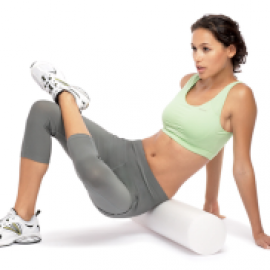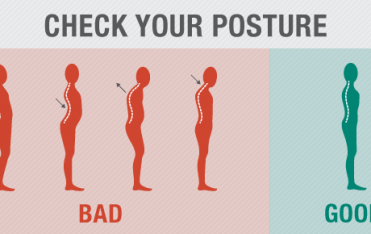Stretching alone is not always enough to release muscles tightness, which is why so many people are regular visitors to sports massage therapists, who are worth their weight in gold for their knowledge and skill in treating and preventing injures. But there’s something we can do to help ourselves in the form of self-massage/myofascial (fascia is the connective tissue that surrounds muscle or group of muscles) work – which is great in other ways because we get direct feedback (sometimes pain!) so can gauge how much pressure to apply at each site.
Foam rolling is a form of myofascial release where pressure is applied to specific points on the body to relieve muscle tightness and restore normal function to muscles i.e. they are elastic and supple. Foam rolling smooths and lengthens muscles, breaks up adhesions that form between muscle layers and fascia, releases trigger points to and thereby helps to address existing and prevent the formation of new scar tissue. Like massage, foam rolling encourages circulation, flushes out toxins and helps to reestablish proper movement patterns and pain free movement at the joints, and ultimately, enhances performance.
Muscle tension or tightness is usually caused by repetitive moving patterns – such as running and cycling, but also resistance training or other repetitive actions and sports. Foam rolling as well as dynamic stretching can help improve flexibility and range of movement, and decrease the risk of injury. Another benefit is that it helps muscles relax by activating the sensory receptors connecting your muscle fibres to your tendons.
The word rolling is also a bit of a misnomer as you don’t have to use the roller dynamically. To foam roll effectively, rest the muscle/limb/area on the roller and move until you find areas that are tight or painful. When working on tight/sore muscles you will experience discomfort or pain, like the pain you get while holding deep or developmental stretches. The point with foam rolling is to use your body weight, so if an area is painful, some of your weight can be supported through your arms/other leg etc. so there is less going through the aggravated muscle. You can add more weight as the muscle relaxes. When you hit a sore spot, hold it until the muscle/fascia feels to have relaxed onto the roller and the discomfort has lessened a little – this normally takes 5-15 seconds but may take up to 30 seconds. It should be uncomfortable, but not unbearable, and when you are done it should feel better. If an area is simply too painful to apply direct pressure, shift the roller and apply pressure to the surrounding area and gradually work to loosen the entire area.
You may also use other tools to work on muscles such as a tennis ball for areas like the upper traps and low back. It’s best to roll after a workout, followed by a static stretch of the muscle/area. This helps your muscles return to the proper length and recover even faster because it can prevent the buildup of mis-aligned fibres that can in time turn to scar tissue. Drink plenty of water, get enough sleep, and eat clean, this will help to flush your system and fuel your muscles more effectively and if anywhere is particularly tender apply ice for ten minutes post-rolling. Depending on what you are treating, foam-rolling can be done as frequently as daily, and should be regular practise for people at all levels of fitness, just 5 to 10 minutes per day will see you reap the benefits, speeding up recovery and boosting performance.



